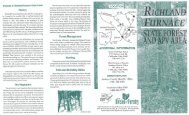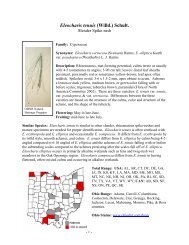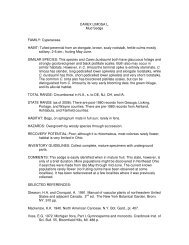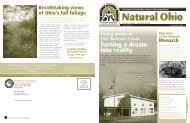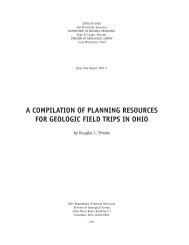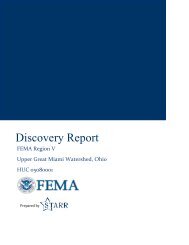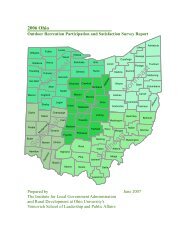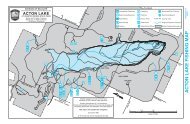Owls of Ohio - Ohio Department of Natural Resources
Owls of Ohio - Ohio Department of Natural Resources
Owls of Ohio - Ohio Department of Natural Resources
You also want an ePaper? Increase the reach of your titles
YUMPU automatically turns print PDFs into web optimized ePapers that Google loves.
Finding <strong>Owls</strong>owls <strong>of</strong> ohioO W L S O F O H I OEven though several species <strong>of</strong> owls can be common, given their nocturnal habits they can be tough t<strong>of</strong>ind. Few people in <strong>Ohio</strong> probably realize just how common our “big three” are – Eastern screech-owl,barred owl, and great horned owl. It is likely that nearly everyone reading this is within earshot <strong>of</strong> anowl, at least at some point during the day. Some good tips that can greatly increase the likelihood <strong>of</strong>locating owls follow here and in the species accounts.N e s t and Ro o s t S ite s finding owlsFinding owl nests is not always as difficult is itmight seem. The easiest <strong>Ohio</strong> owl to find on the nestis the great horned owl, which nests very early. They<strong>of</strong>ten are sitting on eggs in January or February. Mostgreat horned owls use old American crow, great blueheron, or hawk nests, and these large owls can be quiteconspicuous as they sit on their nests as no leaves are yetout that would hide them. Inspect such nests carefullyin late winter and early spring; the owl’s ear tufts <strong>of</strong>tenstick above the nest, giving them away. Barred andEastern screech-owls - and sometimes great horned owls– normally use cavities in trees or even wood duck nestboxes. Closely inspecting cavities as you move throughthe woods occasionally results in the discovery <strong>of</strong> an owlbasking at the entrance to the hole.Other owls require different strategies to locate. Readthe species accounts in this booklet for details on theirhabitats and habits, and techniques for finding them.Nest in Columbus, Franklin County. This is a red-tailed hawk nest that wasappropriated by great horned owls, and was in a very urban site with severalthousand cars passing within 150 feet daily on the nearby boulevard.Photo by: ODNR Division <strong>of</strong> Wildlife / Jim McCormac



